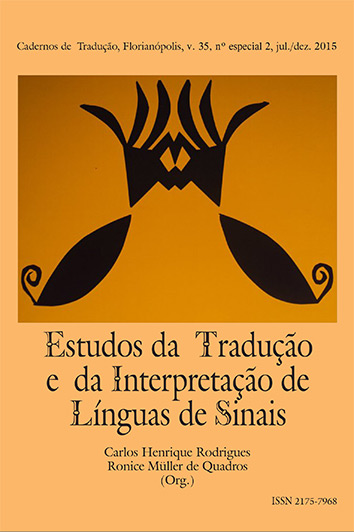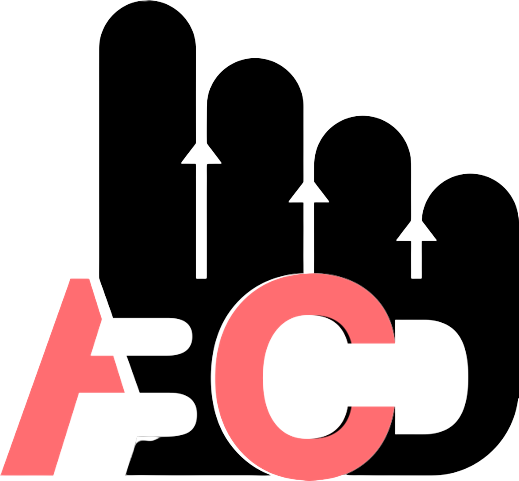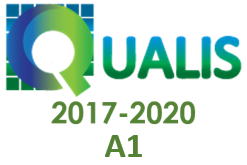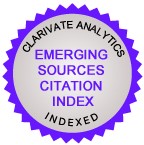Investigating the production of syntax-gesture interface constructions in intermodal simultaneous interpreting
DOI:
https://doi.org/10.5007/2175-7968.2015v35nesp2p319Abstract
This study aims at investigating the production of gestural and spatial constructions in intermodal simultaneous interpreting. Here, it is assumed that the spatial constructions in signed languages involve an external interface between syntax and the gestural space. In this sense, considering the Interface Hypothesis (SORACE, 2006, 2011), the occurrence of residual optionality is expected in an L2 production of these constructions. In addition, it is argued that the simultaneous interpreting process is cognitively demanding, resulting in an increased residual optionality in the production of sign language interpreters. Thus, an empirical study was conducted in order to compare the production of Brazilian Sign Language interpreters in three different tasks, to wit: a simultaneous interpreting task, a translation task and a translation task with a visual aid. The result is that there is statistically more production of spatial constructions in the translation tasks compared to the interpreting task. Additionally, the visual input enhances the production of spatial structures. On the other hand, there was a statistically greater quantity of non-target production in interpreting task than in translation tasks. No effect of the visual input on the occurrence of non-target production was identified.References
AUBERT, F. H. Modalidades de tradução: teoria e resultados. TradTerm 5.1, Humanitas, São Paulo, 1998.
BADDELEY, A. D., HITCH, G.. Working memory. In: BOWER, G. H. (Ed.), The psychology of learning and motivation: advances in research and theory. New York: Academic Press, 1974. p. 47-89.
BARBOSA, H. G. Procedimentos Técnicos da Tradução: uma nova proposta. Campinas: Pontes, 1990.
BERENZ, N. Insights into Person Deixis. Sign Language & Linguistics 5(2), 2002. p. 203-227.
CLAHSEN, H.; FELSER, C. How native-like is non-native language processing? Trends in Cognitive Sciences 10 (12), 2006. p. 564-570.
CORMIER, K.; SMITH, S; ZWETS, M. Framing constructed action in British Sign Language narratives. Journal of Pragmatics 55, 2013. p. 119-139.
DUNCAN, S. Perspectives on the co-expressivity of speech and co-speech gestures in three languages. Paper presented at the 27th annual meeting of the Berkeley Linguistics Society, 2001.
GILE, D. The Effort Models in Interpretation. In: _____. Basic Concepts and Models for Interpreter and Translator Training. Amsterdam/Philadelphia: John Benjamins, 1995. p. 159-190.
HAWKINS, R. Persistent selective fossilization in second language acquisition and the optimal design of the language faculty. Essex Research Reports in Linguistics 34, 2000. p. 75-90.
HAWKINS, R. Explaining Full and Partial Success in the Acquisition of Second Language Grammatical Properties. Second Language 4, 2005. p. 7-26.
HAWKINS, R.; HATTORI, H. Interpretation of English Multiple wh-Questions by Japanese Speakers: A Missing Uninterpretable Feature Account. Second Language Research 22(3), 2007. p. 269-301.
JACKENDOFF, R. Languages of the mind. Cambridge, MA: MIT Press, 1992.
JACKENDOFF, R. Foundations of Language: Brain, Meaning, Grammar, Evolution. Oxford: Oxford University Press, 2002.
KITA, S. How representation gestures help speaking. In: McNEILL, D. (Org.) Language and gesture, Cambridge: Cambridge University Press, 2000. p. 162–185.
LILLO-MARTIN, D., The point of view predicate in American Sign Language. In: EMMOREY, K.; REILLEY, J. (Org.), Language, Gesture and Space. Lawrence Erlbaum Associates, Mahwah, NJ, 1995. p. 155-170.
LILLO-MARTIN, D. Utterance reports and constructed action. In: PFAU, R.; STEINBACH, M.; WOLL, B. (Org.), Sign Language: an international handbook, Berlin/New York: Mouton de Gruyter, 2012. p. 365-387.
LIU, M. How do experts interpret? Implications from research in Interpreting Studies and cognitive science. In: HANSEN, G.; CHESTERMAN, A.; GERZYMISCH-ARBOGAST, H. (Org.) Efforts and Models in Interpreting and Translation Research: A Tribute to Daniel Gile. Amsterdam/Philadelphia: John Benjamins, 2008.
MCNEILL, D. Catchments and contexts: non-modular factors in speech and gesture production. In: McNEILL, D. (Org.) Language and gesture, Cambridge: Cambridge University Press, 2000. p. 312-328.
MEIR, I. A cross-modality perspective on verb agreement. Natural Language & Linguistic Theory 20, 2002. p. 413-450.
MIZUNO, A. Process model for simultaneous interpreting and working memory. Meta 50 (2), 2005. p. 739-752.
OSAKA, M. Nou no memo-cho: wakingu memori (Working memory: The sketchpad in the brain), Tokyo, Shinyosha, 2002.
PADILLA, P., BAJO, M.T., PADILLA, F. Proposal for a cognitive theory of translation and interpreting. A methodology for future empirical research. The Interpreters Newsletter 9, 1999. p. 61-78.
QUADROS, R. M.; KARNOPP, L. B. Língua de sinais brasileira: Estudos linguísticos. Porto Alegre: ArtMed, 2004.
RATHMANN, C.; MATHUR, G. Is Verb Agreement the Same Cross-modally? In: MEIER, R.; CORMIER, K.; QUINTO-POZOS, D. (Org) Modality and Structure in Signed and Spoken Languages. Cambridge: Cambridge University Press, 2002. p. 370-404.
RATHMANN, C.; MATHUR, G. Verb Agreement as a Linguistic Innovation in Signed Languages. In: QUER, J. (Org.), Signs of the Time: Selected Papers from TISLR 2004. Hamburg: Signum, 2008. p. 191-216.
ROGER, H.; CHAN, C. The partial availability of Universal Grammar in second language acquisition: the ‘failed functional features hypothesis.’ Second Language Research 13, 1997. p. 187-226.
SCHMID, M. Language Attrition. Cambridge University Press, 2011.
SCHWARTZ, B. D.; SPROUSE, R. Word order and nominative case in nonnative language acquisition: a longitudinal study of (L1 Turkish) German interlanguage. In: HOEKSTRA, T.; SCHWARTZ, B. D. (Org.) Language Acquisition Studies in Generative Grammar. Amsterdam: John Benjamins, 1994. p. 317-368.
SCHWARTZ, B. D.; SPROUSE, R. L2 cognitive states and the full transfer/full access model. Second Language Research 12, 1996. p. 40-72.
SMITH, W.; TING, L. Shou neng sheng qiao [Your hands can become a bridge], Vol. 1. & 2. Taipei: Deaf Sign Language Research Association, ROC, 1979.
SORACE, A. Initial States, End-States and Residual Optionality in L2 Acquisition. BUCLD Proceedings 23, 1999. p. 666-674.
SORACE, A. Gradedness and optionality in mature and developing grammars. In: FANSELOW, G.; FERY, C.; SCHLESEWSKY, M.; VOGEL, R. (Org.) Gradience in Grammars: Generative Perspectives, Oxford: Oxford University Press, 2006. p. 106-123.
SORACE, A. Syntactic optionality at interfaces. In: CORNIPS, L.; CORRIGAN, K. (Org.) Syntax and Variation: Reconciling the Biological and the Social, Amsterdam: John Benjamins, 2005. p. 46-111.
SORACE, A. Pinning down the concept of “interface” in bilingualism. Linguistic Approaches to Bilingualism, 1 (1), 2011. p. 1-33.
SORACE, A.; FILIACI, F. Anaphora resolution in near-native speakers of Italian. Second Language Research, 2006. p. 339-368.
TIMAROVÁ, Š. Working Memory and Simultaneous Interpreting. In: BOULOGNE, P. (Org.). Translation and Its Others. Selected Papers of the CETRA Research Seminar in Translation Studies 2007, 2008.
TIMAROVÁ, Š., CENKOVÁ, I., MEYLAERTS, R., HERTOG, E., SZMALEC, A., DUYCK, W. Simultaneous interpreting and working memory executive control. Interpreting, 16(2), 2014. p. 139-168.
TSIMPLI, I. M.; DIMITRAKOPOULOU, M. The interpretability hypothesis: Evidence from wh-interrogatives in second language acquisition. Second Language Research, 23, 2007. p. 215-242.
TSIMPLI, I. M.; SORACE, A. Differentiating Interfaces: L2 Performance in Syntax-Semantics and Syntax-Discourse Phenomena. Proceedings of the Annual Boston University Conference on Language Development 30, 2006. p. 653-664.
WHITE, L. Language acquisition at the interfaces. Keynote address at the 2009 Mind-Context Divide Workshop, University of Iowa, 2009.
WOLL, B.; LADD, P. Deaf Communities. In: MARSCHARK, M.; SPENCER, P. E. (Org.) Oxford Handbook of Deaf studies, language and education. Oxford: Oxford University Press, 2003. p. 151-163.
Downloads
Published
How to Cite
Issue
Section
License
Copyright Notice
Authors hold the copyright and grant the journal the right for their articles' first publication, being their works simultaneously licensed under the Creative Commons Attribution License (CC BY), which allows the sharing of such works with its authorship acknowledged and its initial publication in this journal.
Authors are allowed to enter into separate additional contractual arrangements for the non-exclusive distribution of the journal's published version of the work (e.g., post it to an institutional repository or as a book chapter, with an acknowledgment of its initial publication in this journal).






















































